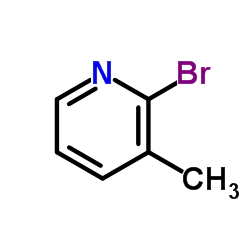Electrochemical homocoupling of 2-bromomethylpyridines catalyzed by nickel complexes.
Kelnner W R de França, Marcelo Navarro, Eric Léonel, Muriel Durandetti, Jean-Yves Nédélec
Index: J. Org. Chem. 67(6) , 1838-42, (2002)
Full Text: HTML
Abstract
2,2'-Bipyridine (bpy) and a series of dimethyl-2,2'-bipyridines were synthesized from 2-bromopyridine and 2-bromomethylpyridines, respectively, using an electrochemical process catalyzed by nickel complexes. The method is simple and efficient, with isolated yields between 58 and 98% according to the structure. We first studied the influence of the presence and the position of the methyl group on the yield, using N,N-dimethylformamide (DMF) or acetonitrile (AN) as the solvent, NiBr(2)bpy as the catalyst, and Zn as the sacrificial anode, in an undivided cell and at ambient temperature. On the basis of a better understanding of the reaction mechanism based on electroanalytical studies, we could improve the dimerization both by substituting the catalyst ligand (bpy) by the reagent itself, i.e., 2-bromomethylpyridine or 2-bromopyridine, and by using Fe instead of Zn as the sacrificial anode.
Related Compounds
| Structure | Name/CAS No. | Molecular Formula | Articles |
|---|---|---|---|
 |
2-Bromo-3-methylpyridine
CAS:3430-17-9 |
C6H6BrN |
|
Conjugate addition of 2- and 4-pyridylcuprates: an expeditio...
2007-03-01 [Org. Lett. 9 , 891, (2007)] |
|
Utilizing proton transfer to produce molecular salts in brom...
2013-11-01 [Acta Crystallogr. C 69(Pt 11) , 1279-88, (2013)] |
|
Copper (ii) complexes of 2-halo-3-methylpyridine: synthesis,...
[Dalton Trans. 40(16) , 4242-52, (2011)] |
|
Synthesis of 2, 2'-Bipyridines: Versatile Building Blocks fo...
[European J. Org. Chem. 2 , 235-54, (2004)] |